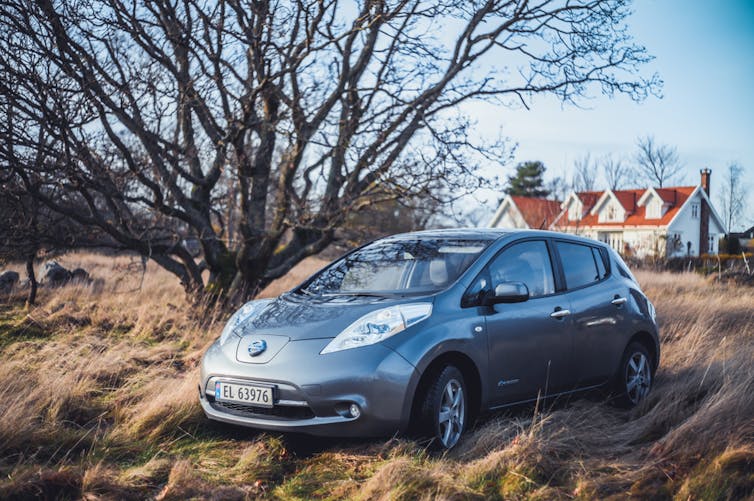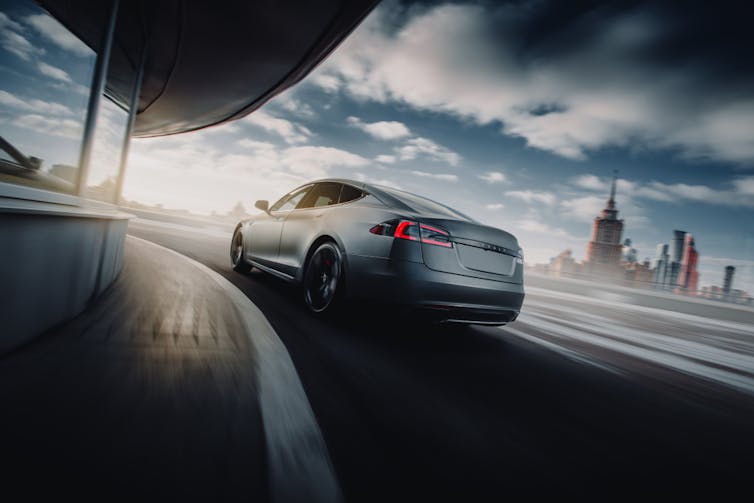Peter Wells, Cardiff University
When Carlos Ghosn was escorted off his private jet after landing at Tokyo’s Haneda airport in November 2018 and promptly arrested for alleged financial misconduct, simmering tensions between carmakers Renault and Nissan over his plans to create a single, cohesive company became all too public.
The two companies, along with Mitsubishi, had forged an alliance in 1999 after Renault rescued Nissan from bankruptcy. This inauspicious start led to an imbalance in the alliance – Renault held 43% of Nissan versus the Japanese company’s 15% stake in its partner. After dealing with the effects on the companies of Ghosn’s arrest, as well as COVID-created supply chain disruption and shifting global demand towards electric vehicles (EVs), a recent realignment of the alliance signals an attempt to reset both companies’ fortunes.
Ghosn had been instrumental in the alliance as “le cost cutter” from French automaker Renault. He was a pivotal figure in the corporate rescue of Nissan, first as chief operating officer in June 1999, then as chief executive officer from 2001. Ghosn was synonymous with the Nissan revival plan. But for Nissan the rescue and subsequent alliance came with strings that led all the way to the French government (which holds 15% of Renault shares).
Unsurprisingly then, Ghosn’s 2018 arrest lead to years of managerial stagnation as attempts were made to resolve the imbalance in the partnership. Without Ghosn – dubbed “the god of cars” in some parts of the media – the accumulating challenges that faced the group took on a new urgency and the value of both businesses fell by almost 40% between 2018 and 2020.
After the pandemic and subsequent disruptions to both supply and demand, both businesses have continued to struggle. While Ghosn’s hope for a single, cohesive company has not been realised, protracted negotiations have resulted in a “rebalanced” alliance. This time it has to work. As Renault-Nissan faces a new era of electric vehicles for carmakers, it is now or never.
Electrifying the alliance
While the new alliance covers multiple issues and locations, the most important single item is the 15% share of Renault’s Ampere electric vehicle business taken by Nissan.
Even before the departure of Ghosn, there were some worrying signs of trouble ahead for these car companies, especially concerning Europe’s burgeoning EV market. Under the leadership of Andy Palmer, Nissan had pioneered the development and production of family-sized battery electric cars, launching the Leaf in Europe in 2011.

Alongside Renault’s Zoe EV, the Leaf (and the E-NV200 electric van) dominated Europe’s early EV market. By January 2015 it had been the market leader for four years – accounting for 14,658 sales out of a total of 56,393 in 2014. This meant the alliance held 46% of the total electric car market in Europe.
When Palmer departed Nissan in 2014, the emphasis on leading the electric car market seemed to wane. By March 2018, the Leaf and Zoe were still leading in terms of European market share, but competition was intensifying with new models from Tesla (Model S, Model X), BMW (the i3), Hyundai (Ionic Electric) and others gaining ground.

And as the electric car market pivoted from niche to mainstream, Nissan and Renault failed to capitalise on their early advantage. By November 2022, around one in four new cars sold in Europe were plug-in electric with year-on-year market growth of 26%. At this time Renault had fallen to ninth place in the electric car sales rankings (selling 5,321 of its Megane E-Tech cars). Neither Nissan nor Renault has a model in the top ten bestselling electric cars for the year to date.
Crucially, the continued market success of Tesla (with the Model Y and Model 3) has been mirrored by Renault’s main legacy competitors in Europe – Fiat (the 500) and VW (ID-3 and ID4) have been particularly successful. It was apparent by the time negotiations started on the new alliance that Renault in particular was no longer in a position of strength.
Now the alliance has to catch up. In 2018, there were about 60 plug-in and fuel cell models available in Europe. By 2025 there could be 333. Of 172 new battery electric models expected to be on the market by 2025, only 13 are from Renault-Nissan, compared to around 50 from VW Group. Investment in battery manufacturing is also growing, such that there could be 35 gigafactories producing the electric car power sources in Europe by 2035, from single digits at the end of 2022.
A bold plan
The alliance has some hope, but more importantly, some bold plans. Manufacturing will be easier and cheaper due to shared parts and designs between vehicle types. For starters, the Nissan Ariya battery electric SUV is based on the common module family electric vehicle (CMF-EV) platform, as is the Renault Megane E-Tech. An electric replacement for the Nissan Micra and a new Renault 5 will have 80% of their parts in common.
By 2028 Nissan plans to introduce solid-state batteries. But, by then, the global electric car market could see demand for 30 million cars per year. This may leave Renault-Nissan overwhelmed by faster legacy competitors in their respective domestic markets – as well as an ever-growing list of new entrants around the world.
The hope is that the new arrangements will unleash “strategic” creativity, allowing managerial freedom while retaining the cost advantages of shared volume. The risks are that technology may develop in another direction from Nissan-Renault’s current plans. But the alliance may also fail to execute such a complex restructuring in time to take advantage of this new auto world.
The alliance is a political as well as corporate arrangement. If it fails, it could show that Ghosn was right in the end about the need to turn the alliance into a single car company.
Peter Wells, Professor of Business and Sustainability, Cardiff University
This article is republished from The Conversation under a Creative Commons license. Read the original article.

